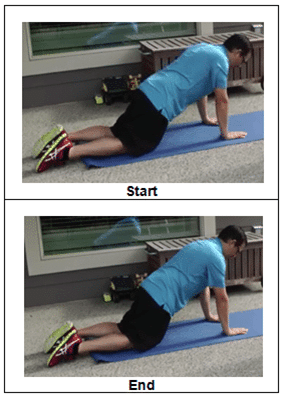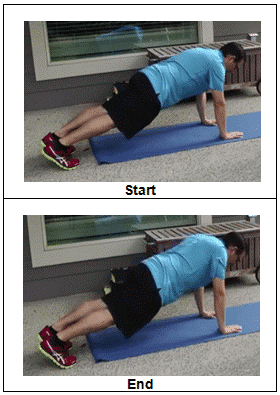
“What is the best exercise for the subscapularis?”
On the Exercises for Injuries Facebook fan page, I recently received a great question:
To maintain a healthy lifestyle, one should exercise their muscles regularly, including exercising for the subscapularis.
Importance of Subscapularis
The subscapularis is a very important muscle on the shoulder blade’s upper inner side. It attaches the upper arm bone (humerus) to the shoulder blade (scapula). It is responsible for shoulder motion and strength; it helps with arm movements, posture, and trunk stability.
Many different movements of the arm rely on this muscle, some of which include: moving your arm away from your body (abduction), rotating your arm outwardly (external rotation), rotating your arm inwardly (internal rotation), and turning your palms up (supination).
Neglecting to exercise the subscapularis can lead to pain and poor performance. When not working properly, or if too much pressure is put on it due to poor posture, the tendons that connect this muscle to the scapula can tear. This can lead to severe pain and loss of mobility in the shoulder region.
This article will tell you why it is important to exercise your subscapularis muscle, especially during an injury, and how to do it properly.
What is Subscapularis?
The subscapularis is a rotator cuff muscle that does something different from the other rotator cuff muscles. Instead of moving the shoulder outwards (external rotation), it rotates the arm inwards (internal rotation).
If you have a rotator cuff or shoulder injury, you should target ALL of the rotator cuff muscles. People frequently overlook the subscapularis, which can cause your injury to heal more slowly and raise your chance of re-injury.
The best exercise for the subscapularis is a variation of the conventional push-up, which we call the “Push-Up Plus.”
There are two ways to do the Push Up Plus: (1) From your knees and (2) From your toes. Here, you move into a push-up position, either from your feet or from your knees (going from your knees is a little bit easier!) Either way, the main goal is to focus on lifting your upper body further away from your hands when in the end position of the push-up with your arms fully extended.
1. Push Up Plus – From Your Knees
Push Up Plus – Knees
This modified push-up, commonly known as the knee push-up, is a bodyweight exercise that targets muscular groups throughout the upper body.
Knee push-up plus is performed by positioning your hands shoulder-width apart directly under your shoulders, with your lower body resting on your knees. Keep the tension in your shoulder blades and mid-back as you bend your elbows and touch your body closer to the floor. Remember always to engage your glutes and core.
2. Push Up Plus – From Your Toes
Push Up Plus – Toes
Do the Toe push-up by getting down on all fours and placing your hands slightly wider than your shoulders apart, ensuring that your arms and legs are straight and aligned. Slowly lower your body until your chest is close to the ground.
Complete this exercise in a slow and controlled movement, holding one second at the top before lowering back down. Start with five repetitions, progressing to about ten repetitions.
It is recommended to start from your knees (the knee push-up plus) until you are more comfortable with the exercise and then progress to your toes.
Important: Be careful not to collapse through the mid-back or lower your head. Remember to always stay in good alignment to prevent further injuries.
Rotator Cuff Injury
So there you have it! If you’re looking for the greatest workout for the subscapularis, give the Push-up Plus a try! If you suffer a rotator cuff injury, ensure your treatment and preventive regimen include this important muscle region.
Make sure to swing by exercisesforinjuries.com and enter in your injury or pain. There is a good chance that I have an article, video, or interview that will help you overcome your injury or pain.
Lastly, head down below hit “Like,” and leave me a question or comment.
CLICK HERE to watch the YouTube video



